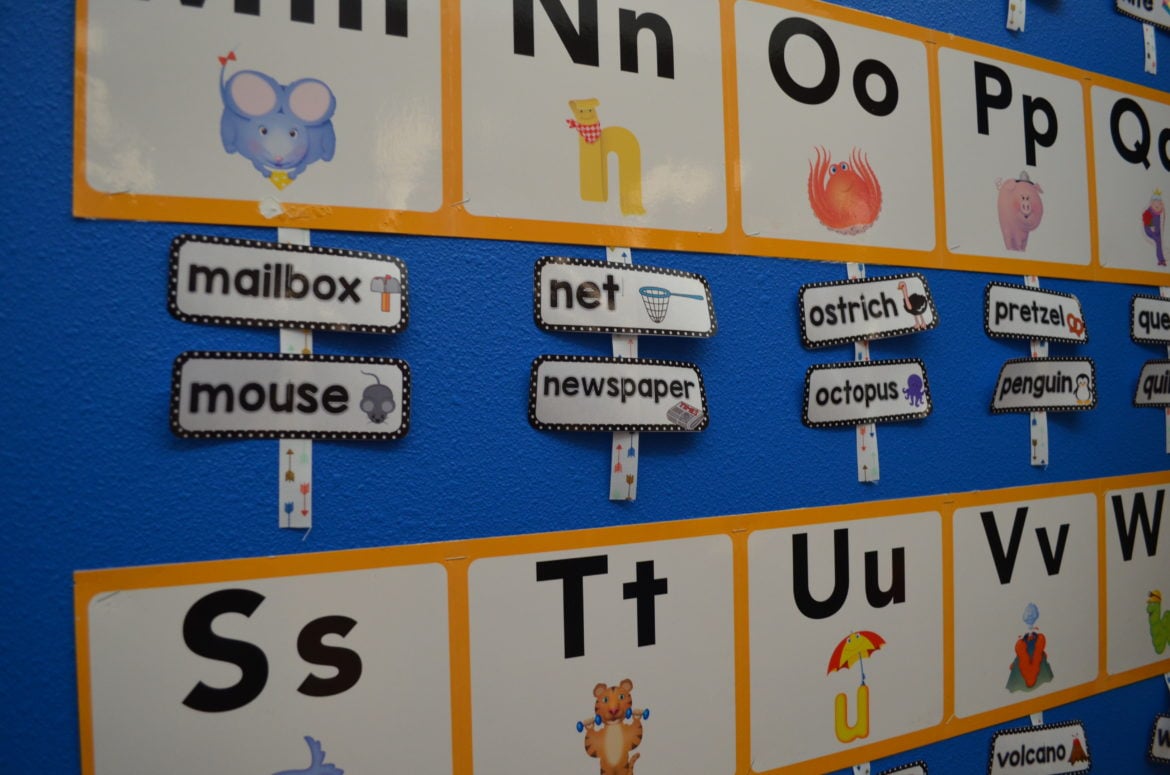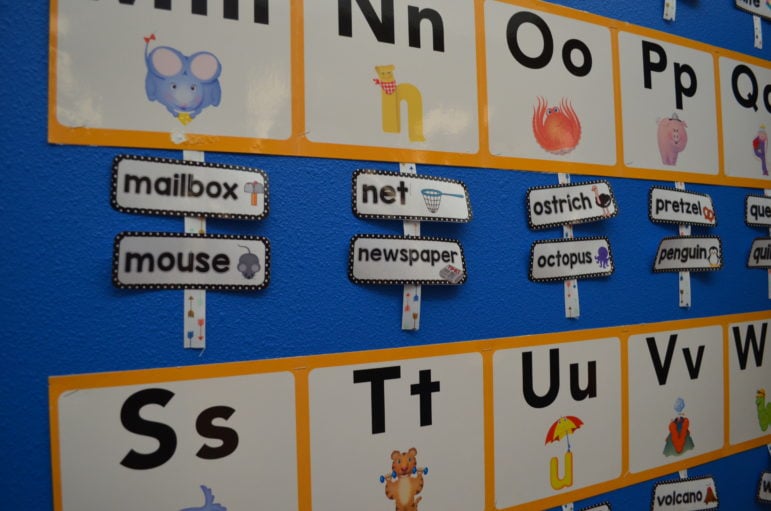
Xchelzin Pena/New Mexico In Depth
Early childhood education will be a huge factor in the legislative session starting Jan. 15 in Santa Fe.
As the legislative session commences, public education is Issue No. 1 during the next 60 days in Santa Fe.And hanging over the debate about teachers’ salaries and envisioning schools for the 21st century will be state District Court Judge Sarah Singleton’s ruling that New Mexico has violated the state Constitution for not adequately educating at-risk students.
New Democratic Gov. Michelle Lujan Grisham spoke about rising to the challenge days after her victory with Kennedyesque imagery. “We have an opportunity to do a moonshot in education. That has never occurred before” she told a national TV audience on MSNBC’s “Morning Joe.”
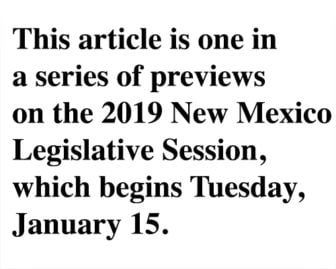 But it’s unclear how Lujan Grisham and the Democratically controlled Legislature will respond to Singleton’s gauntlet.
But it’s unclear how Lujan Grisham and the Democratically controlled Legislature will respond to Singleton’s gauntlet.
Even with a $1 billion surplus, top lawmakers are saying there may not be enough to satisfy every education need this year.
Lujan Grisham suggested the same in mid-December, as she listed a litany of needs her administration is inheriting from Republican Gov. Susana Martinez’s administration.
“We’ve got some serious vacancies” in state agencies, Lujan Grisham said. “Capital outlay is always tough. We’ve been starving local communities for the last eight years.”
“I want to make sure we hit our marks in public education, which is a priority,” Lujan said. But “the notion that we have $1 billion, let’s spend every penny and see what happens next year means that we are not serious about stabilizing where we are.”
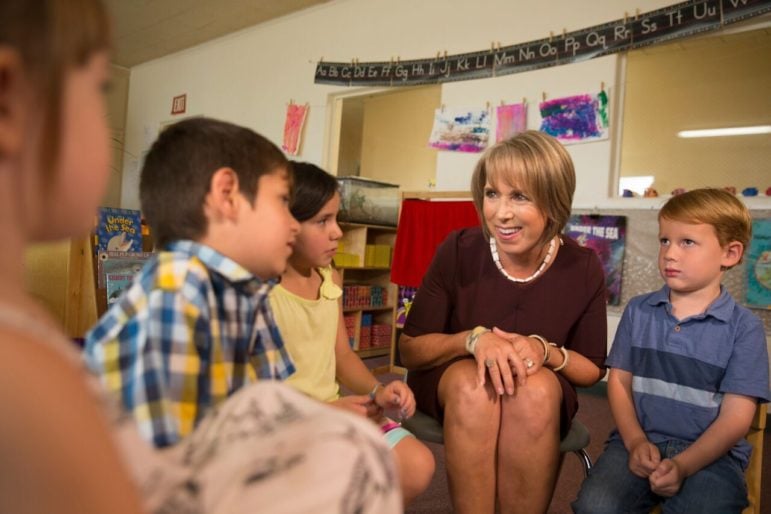
Courtesy of New Mexicans for Michelle
Michelle Lujan Grisham speaks with students.
In other words, prepare for a lot of scrapping over how to fund public education.
But the debate won’t only play out over how much more to pump into K-12 education, already the state’s single-largest expense, but also over how best to serve the state’s sizable population of at-risk students.
Among the discussions will be how to produce more Native American teachers to instruct at schools serving large numbers of native students and raising the quality of staff at high-poverty schools, which struggle with large numbers of inexperienced teachers.
Another debate will focus on how much authority to give tribal and local communities to decide what is culturally and linguistically appropriate curriculum to comply with already-existing state laws.
And state lawmakers will try to loosen government bureaucracy that gets in the way of increasing the population of children 4 and younger in public PreK and private child care programs around the state.
Meeting needs of at-risk students
The reason education is at the top of the agenda in 2019, beyond the newly consolidated Democratic control of state government, is a years-old lawsuit brought by parents and school children that alleged New Mexico has perpetuated long-standing inequities against certain populations, specifically English-language learners, Native American, economically disadvantaged and special education students.
In July Singleton found the state had violated those students’ constitutional rights to a sufficient education. Lujan Grisham said during her run for governor that she would not appeal the decision.
As the Santa Fe judge noted in her ruling, New Mexico is home to a large population of students that qualify for one at-risk factor.
Nearly three of every four students in the state come from low-income families. One in seven are English language learners; the same percentage are disabled. One in 10 are Native American.
Singleton’s ruling, in fact, reads like a litany of deficiencies: there aren’t enough up-to-date textbooks in some districts; high-poverty schools attract a majority of entry-level teachers, who are usually the least effective instructors.
“The evidence leads to the conclusion that the quality of teaching for at-risk students is
inadequate,” the judge wrote. “Unfortunately, in New Mexico high poverty schools have a
disproportionately high number of low-paid, entry level teachers.”
In the perennial conversation over how to parcel out the state’s resources year after year, Singleton’s ruling appears to shift the power equation from state officials and top lawmakers to at-risk students and their advocates, many of whom come from the state’s communities of color.
One of the challenges in addressing Singleton’s lawsuit will be a push and pull over who gets a seat at the table to determine what are the best solutions for at-risk students.
A big question is whether an entrenched educational policy experts and advocates will make space for the perspectives of those constituents who brought the lawsuit in devising solutions, and who may have serious critiques of the status quo. Many of those constituents feel they have been dismissed by those in power, to the detriment of their children.
“State officials have sometimes said Native American parents don’t care about the education of their children,” said Regis Pecos, co-director of Santa Fe’s Leadership Institute and former chief of staff to longtime Democratic House Speaker Ben Lujan.
To dispute the point, Pecos points to the survival of indigenous languages and cultural practices in New Mexico’s 19 Pueblos and three reservations as evidence of the resilience of tribal communities.
In Pecos’ view, and others, New Mexico is finally being forced to grapple with a problem centuries, not years or decades, in the making.
To make the point, he cites last month’s update of the U.S. Commission on Civil Rights’ influential 2003 report called “A Quiet Crisis: Federal Funding and Unmet Needs in Indian Country.” The 314-page update found that, despite some progress, the crisis in Indian Country remains because of the federal government’s failure to adequately support “the social and economic wellbeing of Native Americans” over the last two centuries.
As a result, Native Americans “rank near the bottom of all Americans in health, education, and employment outcomes,” according to the report’s authors.

Edward Tabet-Cubero of the Learning Alliance New Mexico.
Edward Tabet-Cubero of the Learning Alliance said some of the same deficiencies are found in communities where Spanish is a child’s first language and, which more likely than not, have higher rates of poverty.
It’s why Tabet-Cubero, the former director of the New Mexico Center on Law and Poverty, which along with MALDEF successfully sued the state, suggests that more dual language education be incorporated in public schools around the state. Students in dual language programs are taught literacy and content in two languages.
“We have some of the most progressive policies (on dual language education) but we don’t implement them,” Tabet-Cubero said, adding that only 115 of the state’s 900 public schools have implemented dual language learning.
Advocates would like to see more community input into education standards through state advisory councils with broad local representation as well.
Communities should be given greater say in what educational success looks like, they say. For example, the state created the Indian Education Act in 2003 but hasn’t lived up to its promise. The act was meant to ensure equitable and culturally relevant learning environments and the maintenance of Native languages, which Pecos and Native educators say is crucial to fostering confidence and buy-in from tribal students in a system that often dismisses them.
Singleton noted the dearth of “culturally relevant instructional materials for American Indian students enrolled in public schools” in her ruling, saying that it violated the statute and, by extension, “the (state) constitution‘s adequacy clause,” as well.
All of this is why Pecos, Tabet-Cubero and others say $1 billion is the bare minimum of what the state should spend to start adequately addressing a complex challenge centuries in the making.
They hope for major progress with Lujan Grisham in the governor’s mansion and a larger caucus of progressive lawmakers in the state House of Representatives.
“The question is what we will get,” said Tabet-Cubero.
In the classroom
At the heart of education debates this year will be the classroom and it’s where a lot of high-profile discussions will focus.
Foremost is giving big raises to teachers and other educators such as administrators, educational assistants, counselors and social workers. New Mexico was 46th in the nation on teacher pay in 2017, according to the National Education Association’s annual ranking. When people talk about “putting money back into the classroom,” that’s a big part of it. There were 1,173 educator vacancies in New Mexico in October, according to the 2018 New Mexico educator vacancy report produced by New Mexico State University’s College of Education, and 740 of those were teacher vacancies.
While many agree on better pay for New Mexico’s teachers, expect a debate to focus on how much the increase should be.
Advocates, plaintiffs and lawyers in the Yazzie-Martinez lawsuit have proposed $45,000, $55,000 and $65,000 for the different experience levels of teachers. Some believe making wages competitive with surrounding states and paying tuition and living expenses for education students are necessary this year.
“That’s a big chunk of what the money should be spent on,” said Lauren Winkler, an attorney for the New Mexico Center on Law and Poverty who worked on the lawsuit.
But not everyone is on board.

Sen. Bill Soules, D-Las Cruces
Sen. Bill Soules, D-Las Cruces, chair of the Senate Education Committee, said it would take a couple of years to get to that point. He saw $40,000, $50,000 and $60,000 as more likely this session.
Another area where consensus has formed is in filling a backlog of textbooks and other teaching material and paying for new buses and infrastructure. Because the state can’t consistently count on money from an oil and gas industry known for boom and bust cycles, there is pressure to use this year’s surplus to help restore an underfunded education system that limps along at pre-2008 funded levels in inflation-adjusted dollars.
In addition to raising teacher wages, there will be a push to give teachers more mentorship, training and class prep time. And Sen. Mimi Stewart, D-Albuquerque, a former educator who heads up the Legislative Education Study Committee, said she’s hoping to get away from the “shame and blame” teacher and school evaluation systems that have driven many teachers from the field. Half of teachers in New Mexico leave the profession within five years of graduating college. According to the NMSU teacher vacancy report, one-third of the state’s teachers surveyed said they had testing-related job insecurity. The national average was 12 percent.
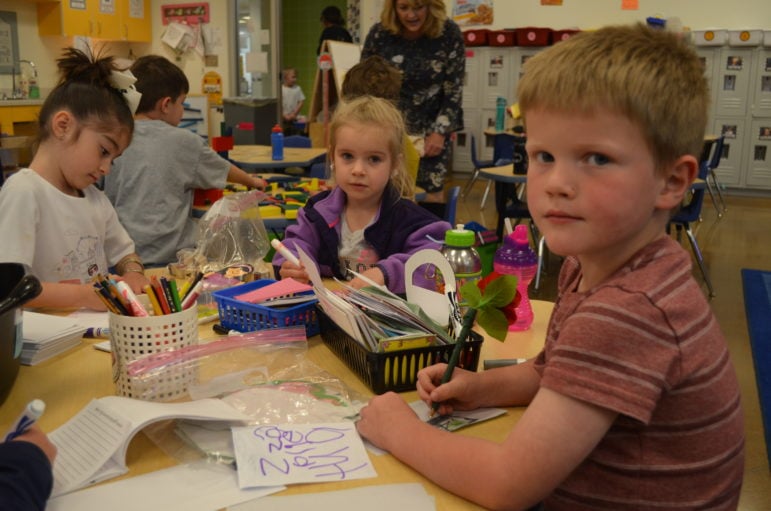
Xchelzin Pena/New Mexico In Depth
Working on writing skills in a New Mexico PreK class at Berrendo Elementary in Roswell, NM.
Early childhood
Support for universal access to PreK appears to be, well, just about universal. The program grew under Gov. Susana Martinez and legislators protected it during tough budget years. Now Lujan Grisham has said access to full-day preschool for all New Mexico children will be the hallmark of her administration.
That doesn’t mean it’s going to be easy.
When the program was first passed in 2005, the state thought it would take about five years to phase in. Fast forward to 2018, and only one-third of New Mexico 4-year-olds are in New Mexico PreK, according to the Legislative Finance Committee’s annual early childhood accountability report. And many of those children are in half-day programs, which can be challenging for working parents and are less effective for children.
The problems for expanding access are manifold, but they start with a lack of qualified teachers.
New Mexico Voices for Children’s Bill Jordan said his group has been frustrated by the slow rollout. It’s something he blames on poor priorities from lawmakers and the former governor.
“It’s a chicken or egg question,” Jordan said. “Do you need the funding or do you need the workforce? Well, you can’t get one without the other. They simply haven’t funded early childhood in the way that they should.”
Poor pay for private preschool teachers has led to high turnover and few people are entering the field. The median wage for preschool teachers in New Mexico was $26,670 in 2015, according to a 2016 U.S. Department of Education report on wages in early childhood education. Compare that to the median pay for a Kindergarten teacher in New Mexico, $52,870, and you can see why many preschool teachers take their experience and head to a public school — especially since PreK is expanding into many New Mexico elementary schools.
Another issue that needs solving is the competition between New Mexico PreK and Head Start, a federally funded program to help low-income children. As New Mexico PreK has expanded, Head Start has been shrinking, from 5,046 preschool slots in 2012 to 3,486 in 2017.
Rep. Rebecca Dow, R-Truth or Consequences, wants to pump the brakes on PreK expansion and take a more holistic approach to early childhood care and education that serves children from birth to age 5, rather than just emphasizing preschool slots for 4-year-olds.
Dow, the director of a nonprofit childcare center, believes the Legislature should focus on hiring social workers, supporting foster parents and the families of children removed from their parents, expanding eligibility for childcare assistance to at least 200 percent of the federal poverty level and making sure any raise in the minimum wage doesn’t boot families out of the program and cause unintentional financial harm.
“I’m an advocate for the poor. We want families to become self-sufficient. Well, that starts with them being able to work and go to school,” she said. “It starts with child care. Which doesn’t start at 3, it doesn’t start at 4. It starts when their child is 6 weeks old. It’s full day, it’s year-round.”
Any expansion to universal PreK will require money. The question is how will the state pay for it.
Lujan Grisham has endorsed a long-running effort to tap the Land Grant Permanent Fund — the state’s $17 billion trust fund for education. Reps. Antonio “Moe” Maestas and Javier Martinez, both Democrats from Albuquerque, have prefiled their resolution to take out an extra 1 percent of the fund to pay for early childhood programs, which was approved in the House in 2018, but never made it out of the Senate.
“We’re as hopeful as we’ve ever been,” Martinez said. “Having the fourth floor fighting for the concept will be very helpful with regard to how we deal with the Senate.”
Breaking down silos for children’s services
Lujan Grisham has revived a concept from the Richardson administration, the children’s cabinet.
Programs that serve New Mexico’s children are scattered across the state government, most heavily in the Children Youth and Families Department, the Public Education Department, the Department of Health and Human Services Department.
The problem is particularly notable with New Mexico PreK, which is administered by both the PED and CYFD, with different teacher qualifications required by each. (Curriculum has been standardized in recent years.)
Lujan Grisham reinstituted the children’s cabinet immediately, naming a director before she was even sworn in.
“I think because the governor has been in state government in those positions before, that she will understand the importance of it,” said Jordan, of NM Voices.
A competing plan for coordinating efforts has been introduced by Sen. Michael Padilla, D-Albuquerque. Padilla proposed the creation of an Early Childhood Education and Care Department. His bill would transfer programs for children from birth to age 5 housed in the PED, CYFD, Health Department and Human Services Department into the new department.
Padilla’s proposal has gained the endorsements of Diane Denish, who as lieutenant governor under Bill Richardson chaired the children’s cabinet, and the New Mexico Early Childhood Development Partnership.
